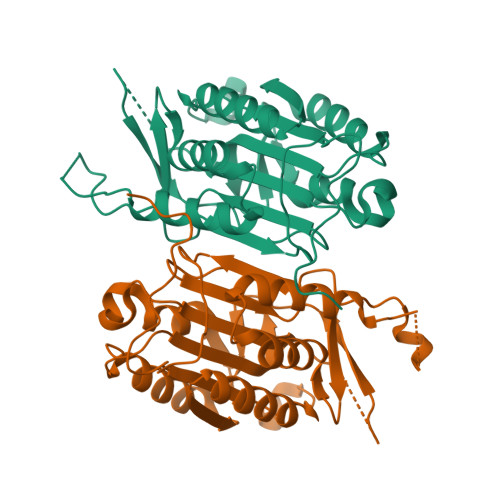Inhibitory mechanism of caspase-6 phosphorylation revealed by crystal structures, molecular dynamics simulations, and biochemical assays
Cao, Q., Wang, X.J., Liu, C.W., Liu, D.F., Li, L.F., Gao, Y.Q., Su, X.D.(2012) J Biological Chem 287: 15371-15379
- PubMed: 22433863
- DOI: https://doi.org/10.1074/jbc.M112.351213
- Primary Citation of Related Structures:
3V6L, 3V6M - PubMed Abstract:
The apoptotic effector caspase-6 (CASP6) has been clearly identified as a drug target due to its strong association with neurodegeneration and axonal pruning events as well as its crucial roles in Huntington disease and Alzheimer disease. CASP6 activity is suppressed by ARK5-mediated phosphorylation at Ser(257) with an unclear mechanism. In this work, we solved crystal structures of ΔproCASP6S257E and p20/p10S257E, which mimicked the phosphorylated CASP6 zymogen and activated CASP6, respectively. The structural investigation combined with extensive biochemical assay and molecular dynamics simulation studies revealed that phosphorylation on Ser(257) inhibited self-activation of CASP6 zymogen by "locking" the enzyme in the TEVD(193)-bound "inhibited state." The structural and biochemical results also showed that phosphorylation on Ser(257) inhibited the CASP6 activity by steric hindrance. These results disclosed the inhibition mechanism of CASP6 phosphorylation and laid the foundation for a new strategy of rational CASP6 drug design.
Organizational Affiliation:
State Key Laboratory of Protein and Plant Gene Research and Biodynamic Optical Imaging Center (BIOPIC), School of Life Sciences, Peking University, Beijing 100871, China.
















